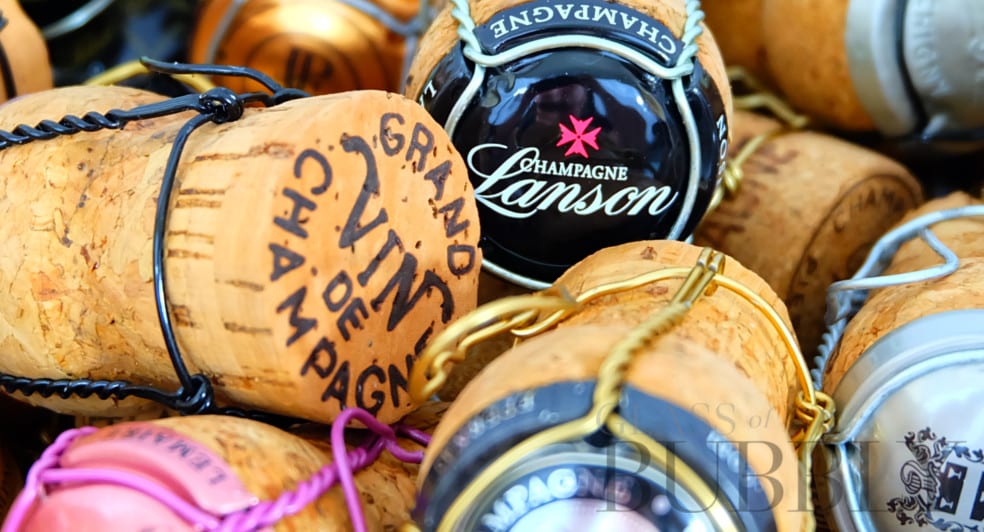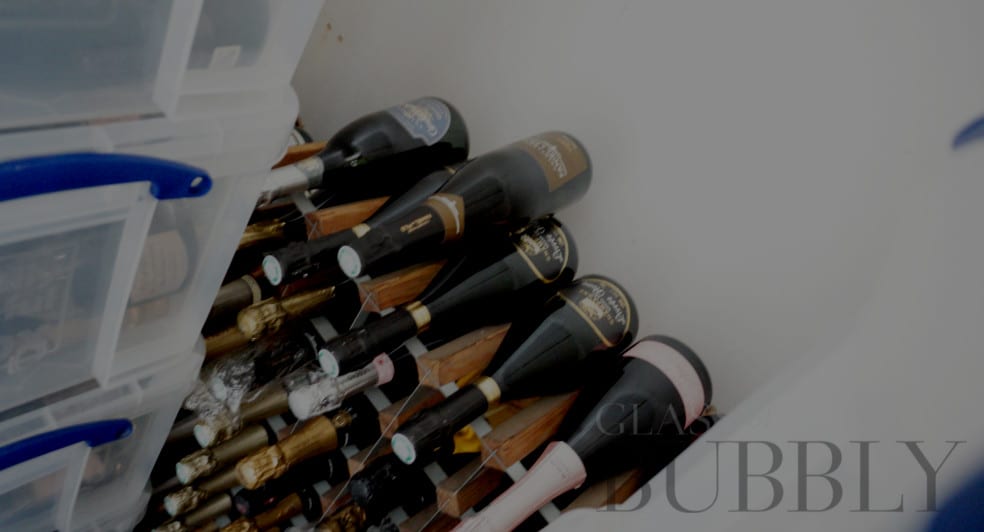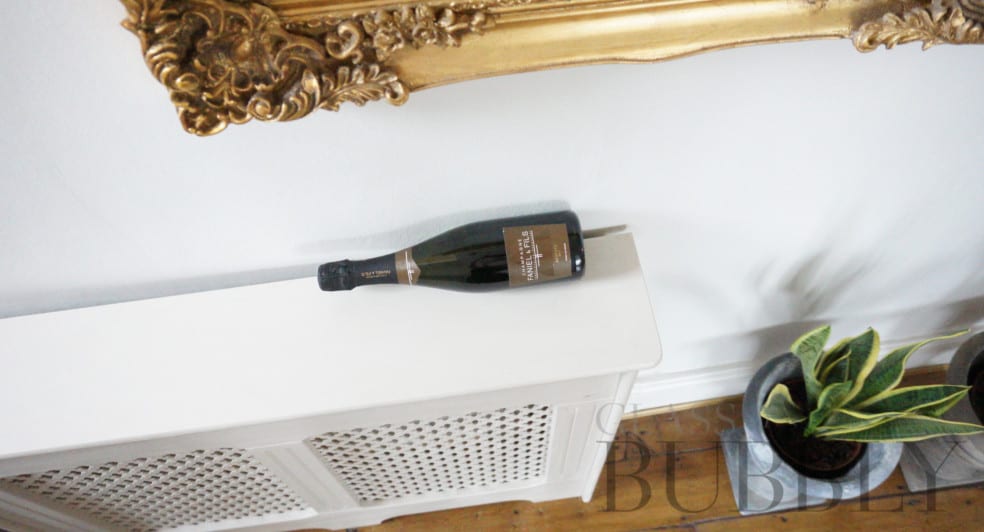How to Recognise Champagne Faults
18th February 2021

In most cases, we get to enjoy that glass of Champagne at its best, within its peak performance level, exactly as the winemaker wanted us to enjoy it. France’s most famous sparkling wine will usually set us back more money than many of its competitors and for consumers worldwide, our expectations of it are relatively high – We certainly hope to get what we pay for in tasting experience.
Champagne winemakers dedicate all their time to realise some of the world’s finest wines. From the vineyards that grow the grapes to the production process through to the many years’ of storage – Each assignment that is the responsibility of a winemaker will be closely monitored. The end goal is to produce Champagne that delights their customers and hopefully also become recognised at global Champagne awards with the likes of gold medals and trophies. All winemakers take great pride in their work – It is indeed a prestigious title to hold at any winery.
Sometimes though we will find a bottle of Champagne that does not perform as we expect of it. This can be the cause directly from the winery itself or during its journey thereafter such as via storage from the wine merchant, restaurant, bar, supermarket or even by the end consumer. Let me explain:
Faults can be initiated at the winery, a rare occurrence indeed, but nonetheless previously reported. If we see a fault, not as an action from the winemaker directly such as errors in the blend, but from materials used then we can report the following:

Champagne corks
Cork Taint: Champagne will be contained within the bottle via a cork, usually made of wood (mostly Portuguese). The taint effect is via trichloroanisole which can leave a bad smell that with time can transfer to the wine, usually caused by the likes of pesticides/wood preservatives having been in contact with the wood previously. Here we will experience the ‘wet paper’ and ‘wet cardboard’ fault that the wine will express. Sometimes this is very subtle and not easy to spot. The expression may extend into mushroom characters (though not to be confused with aged/older vintage Champagne that may express mushroom).
Oxidation: A wine is stored securely within the bottle, usually via a cork/screw cap, in order to preserve the quality – once the bottle is opened then, just like many other drink and foods, it is advisable to consume it relatively soon. For Champagne, there are varied tops that you can purchase that fit on to the top of the bottle (it is very difficult to place the original cork with cage back in) so to preserve for as long as possible the quality (and mostly the bubbles). Oxidation can be from poor storage of the Champagne, such as the cork has shrunk thus allowing oxygen in and damaging the quality of the wine or in that the bottle has been opened for too long such as those served by the glass at venues (bars and restaurants). Here the fault will highly likely be in that the wine is relatively (sometimes totally) flat and you may also see (for oxidation within closed bottles) that a discolouring has occurred showing a touch yellowness to white/brut labels as well as taste faults to include dullness/cider and extreme cases even vinegar.

Serving Champagne by the Glass can see oxidisation faults from bottles that have remained open too long
Storage damage: One of the biggest reasons which cause faults in Champagne is storage. Very few of us will have an underground dark and damp cellar at hand, neither professional wine fridges, so we usually end up storing wines in convenient locations at home. Champagne faults are commonplace during this time such as effect from movement/light/heat.
There is a reason that the Champagne region of France is blessed with the most magnificent wine cellars and that is because the wine performs best when stored in damp, cool, dark and peaceful locations. Wine experts will say that movement of the wines can cause a downgrade in quality over time, though the biggest issues, once the Champagne has left the cellars, is from light and temperature.
Damage from light (known within the industry as lightstrike) covers not only daytime light such a from the sun, but also that of UV lights. Though many Champagne bottles are dark green to protect from light damage, there are still many that are in clear bottles – Make sure they are stored in a dark place. Over time, the fault from light will include the wine tasting like damp clothing as well as losing any exciting, fresh fruity flavours.
Damage from heat is quite common when we have Champagne at home as they will go up and down as the temperatures of our homes change during the year. Most rooms of the house will have heating that goes on and off during the seasons – What is inside the Champagne bottle will do likewise!
For this fault, I did a home test and for 45 days I stored two exactly same Champagne labels in two very different locations. I wanted to see whether or not heat can affect the quality of the Champagne when in excess over an identical bottle stored in the recommended way, with a constant cool temperature in darkness and without any movement. For 45 continuous days Champagne A sored correctly, Champagne B stored on top of a radiator cover so receiving the constant warm rising air – Both then stored 24 hours within a fridge prior to serving and tasting.
Yes, I may very well have sacrificed a perfectly good bottle of Champagne and many wine enthusiasts will be horrified to see a bottle of Champagne resting by a radiator, but in the duty of journalism, it is what was called of me for this article.

Champagne A: Stored in a dark understairs location within a stable cool temperature
Tasting notes for Champagne A: “Pretty much as I expect from this Champagne house. A great display of fruit flavours mostly fresh apples, citrus, honey pastry – Plenty of refreshing acidity. Aromas are young and alive showing a burst of citrus, white floral, apricot. I would say this Champagne is performing at more or less 100% as it is made by Mathieu the winemaker.”

Champagne B: Stored for 45 days on top of radiator cover of a spare room
Tasting notes for Champagne B: “Nose is certainly a touch different with a bruised cooking apple/cider edge. It is not overly displeasing, but I do not get the feeling of young and fresh when I compare with the sample above. Flavours are quite similar to that of the correctly stored sample though once again I have an ever so faint, yet there nonetheless, cider / bruised apple character. Still quite vibrant with its fruity character, zestiness and honey/pastry. If we leave the wine in the glass for that bit longer then the aroma differences between the two extend further.”
Would I necessarily have picked out the faults if I had not the two Champagne samples side by side? This is debatable as they are quite faint, but if I was a consumer that only really drank this Champagne label then I feel the difference would be noted and certainly if served at a venue it would be asked to be replaced. If we see a touch difference from 45 days of incorrect storage, then this should tell us how much damage can be done via long term poor storage of Champagne.
Champagne used was from Faniel et Fils – Agapane Brut Blanc de Noir (Meunier & Pinot Noir).
Extra common questions and answers regarding Champagne faults:
My Champagne smells of mushrooms, is that bad? “Mushroom character can extend to descriptives such as mouldy, damp, mildew and even metallic. For very old Champagnes then some of these characters are good, they blend in well with the rich fruity flavours as well as other characteristics such as butter, bread, oak, toast and more vintage delights. If the mushroom character overpowers in aromas and flavours then there might be a fault with the wine likely at either the production process or cork taint.”
I see little glass crystals at the bottom of my glass, is that dangerous? “These tiny tartare crystals (sometimes referred to as ‘diamonds’ or ‘glass shards’) can sometimes appear at the bottom of your glass of fizz. They are simply mineral build-up that forms within high mineral wines – They are harmless.”
There are little particles in my glass/bottom of my bottle, what is that? “Champagne is produced using yeast in order to give us the alcohol content as well as defining the expression of the wine itself. The lees (dead yeast cells), which remain within the bottle during the second fermentation process, will be removed before the wine is corked and it being readied to sell. Sometimes this process may leave behind a tiny amount of the lees thus we can see sediment.”
![]()
Christopher Walkey
Co-founder of Glass of Bubbly. Journalist and author focused on Champagne & Sparkling Wines and pairing them with foods.
